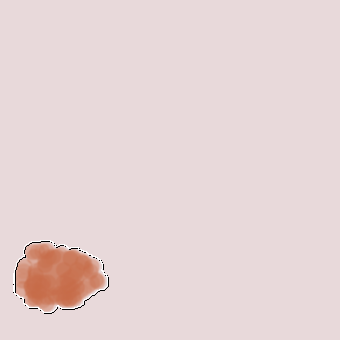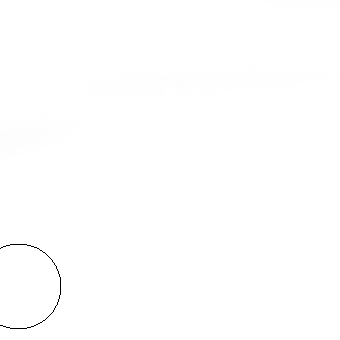-
Posts
1,798 -
Joined
Posts posted by Aammppaa
-
-
Installed fine for me (a couple of minutes) - did notice that the version number (during install) was 1.6.5. <- missing final digits 112.
Thanks for fixing the artboard printing bug.
-
Does your line have a pressure profile applied?
AD will not currently allow a pressure curve and dashes, and unfortunately there is no warning about this, the dashes simply don't work!
If it isn't this, perhaps you can attach your file, so we can take a look.
-
This 'bug' is on both / all platforms, and is I suspect "by design".
I hope it doesn't just get ignored as a result since, as you can see in the above discussion, it really would be a superior feature if it worked a little differently!
-
@firstdefence You certainly win the award for perseverance

Agree that macros would be welcome in AD.
But I really believe that a small tweak to the design of Power Duplicate would make it genuinely quick, powerful, and intuitive.
-
@firstdefence Works(ish) until you have more duplicates that double back on themselves.
Try a complete circle of shapes rotating 15 degrees each.
No longer a trivial task to sort them out.
-
1 hour ago, GabrielM said:
If it was designed to use global coordinates rather than local, you could not create any "ratio" shapes
But with the system as it currently exists we can not create any linear arrays with rotation, and I know which of those two operations I need more frequently!
Secondly, the ratio feature is currently far less useful than it should be as it can only apply a ratio, not a step change…
- Draw a 500px square
- Duplicate
- Resize in the W transform box as -=50
- Power Duplicate
I would anticipate the series to go: 500, 450, 400, 350, 300 etc
But the current result is: 500, 450, 405, 364.5, 328.1 etc
Affinity is interpreting the resize as a ratio (a reduction of 10%) when I asked for a fixed change. If I'd wanted a 10% reduction I'd have resized with W*=0.9
I'd love the team to revisit Power Duplicate and make it more intuitive and more versatile.
-
1 hour ago, GabrielM said:
This is an expected and correct behaviour. Power duplicate works on local coordinates, not global.
Ah! I finally understand why Power Duplicate behaves as it does, however…
- The help file does not mention local (or global) coordinates
- This seems like a very odd design choice!
Can you suggest an efficient method, using Power Duplicate (or other tools in Affinity) to create a horizontal row of (45) squares, equally spaced, each rotated 8° from the last?
-
Also look at Compound Shapes which allow easy adjustment of combined objects.
Or use your group as a mask on the pixel layer (rather than nesting the pixel layer inside the group).
-
But you can change the colour of an artboard?!

Perhaps I misunderstood the request?
-
Your solution seems fine, but I believe you could have don exactly the same within Photo since it has an ellipse tool, boolean compounds and dashed strokes.
-
Daub Essential contains a bunch of pencils… https://gumroad.com/l/IXbWp
Or an earlier free version here…
-
-
-
1 hour ago, gdenby said:
I wish the pressure graph was larger, and had more node control.
+1 from me.
It should pop out as its own window / panel (as the Effects do if you want to see all the parameters).
-
Playing with the brush engine in Photo & Designer and found that Hue / Saturation / Luminance Jitter work differently from other apps…
In Affinity the jitter is applied per dab.

Compare with Photoshop (and others?) where the jitter is applied per stroke.

In my limited experience per stroke is more useful in digital painting for creating subtle variation between painted strokes.
Could Affinity have the option to choose how the jitter is applied?
Thanks for your consideration.
- Przemysław and lepr
-
 2
2
-
-
According to this post it should be added to Photo in the 1.7 update, due later this year.
-
@firstdefence There is no need to export with a background colour, it can be transparent.
-
-
-
-
Try Radial / Linear transparency to fade the edges of a shape. Works well in certain situations, especially where the shape is close to circular / elliptical or has a straight edge.
You can Group an object (even a single object) multiple times and add different transparencies to each group to achieve some complex results.
See attached file.
-
-
Not an answer to your question, but I have always worked the other way around when I like where I am, but want to compare with where I was…
- Copy the object.
- Go back through history to earlier state.
- Paste object.
- Compare the two.
Alternatively: look into Snapshots https://affinity.help/designer/en-US.lproj/index.html?page=/DesignAids/snapshot.html?title=Using snapshots
- Make a snapshot of where you are now.
- Go back in History to find earlier state.
- Copy object in its earlier state.
- Restore the Snapshot.
- Paste the object.
Or even…
- Make snapshot of now.
- Go back in History.
- Make a snapshot of then.
- Toggle at will between the two!
Hope one of these helps with your workflow.







Rotating object horizontally with Ctrl J plus rotation
in Feedback for Affinity Designer V1 on Desktop
Posted
@GabrielM Thanks for getting back to me, but I think that the response misses the point that I raised…
If I want to resize a duplicate by percentage I can already do that by using a percentile expression (say -=10%). This is explicit, and unambiguous.
When repeated using Power Duplicate, I continue to get what I asked for: a series of objects each 10% smaller than the last, which is intuitive and logical.
If I resize by an exact value (say -=50px ) then this is because I want the duplicate to be exactly 50px smaller than the original. Again this is explicit and unambiguous.
But when I repeat with Power Duplicate, Affinity changes the rules (with no warning) and starts applying a percentile ratio, which is not what was asked for.
This is unintuitive and illogical (not a desirable feature).
The two series (fixed steps and percentile ratio) are both desirable and equally valid requirements, so the software must trust that the user knows what they are asking for, and honour the actual request that they made.
Although the 'infinite' series of power duplicates looks great in the video as it showcases Affinity's extreme zoom very nicely, I know that I'd use a fixed step series of duplicates far more frequently than I need percentile changes.
Regarding a fixed step reaching exactly 0, there must be a simple and graceful way to handle this…
Perhaps when the size hits 0 the object ceases to exist (and the existing Assistant pops up to inform me that the object reached zero size and disappeared).
Or maybe a zero sized object is OK (though I suspect not since Affinity will not let me define a dimension of 0).
Even a situation where we don't hit 0 but go negative is not an issue so long as we understand what a negative dimension means. Take for example an object with original width = 50px, duplicated as a series with a fixed step of -11px = 49, 38, 27, 16, 5, -6, -17 etc.
A precedent for what this means already exists in the software: if I resize a rectangle manually and pass through the zero point the object flips (on the relevant axis) and then grows larger again. It would be logical that the same thing happens when a power duplicate action passes through zero.
To reiterate: I really hope the devs can revisit the design choices behind Power Duplicate. I am not asking that any existing ability is removed, but rather that the functionality is extended to be more capable, more logical, and more intuitive.